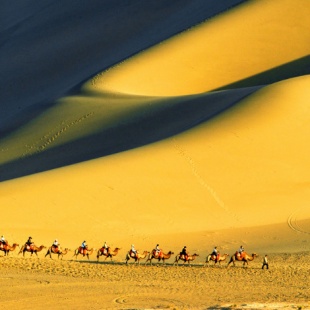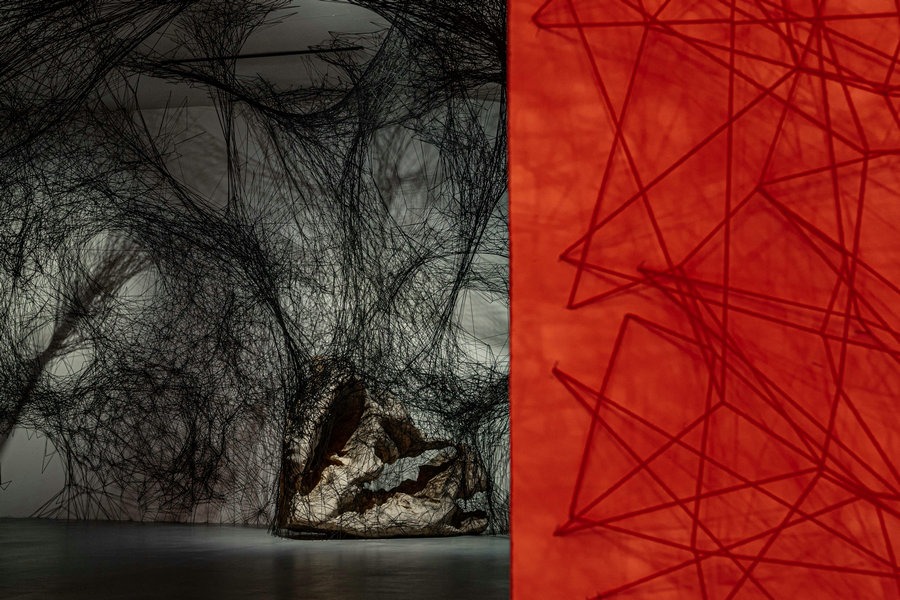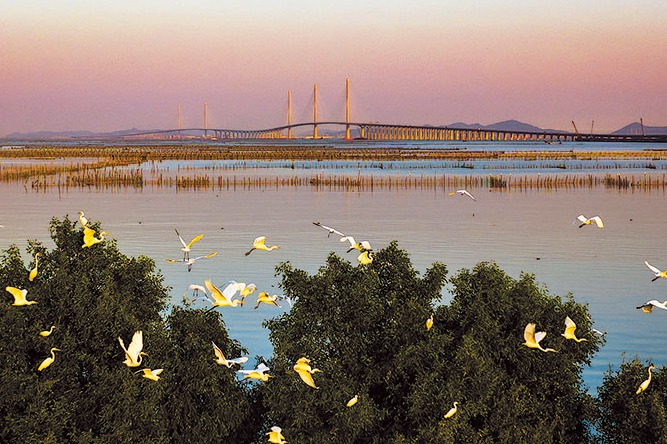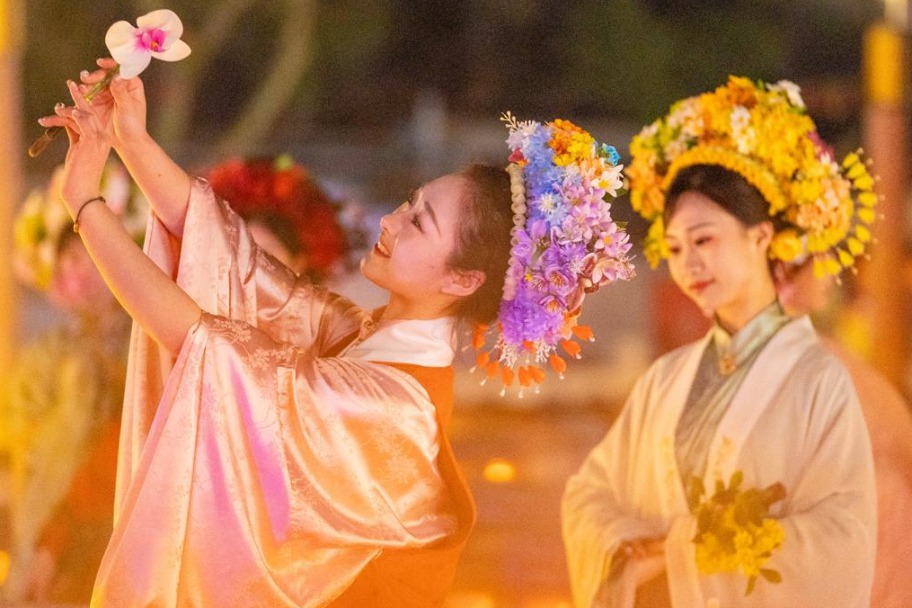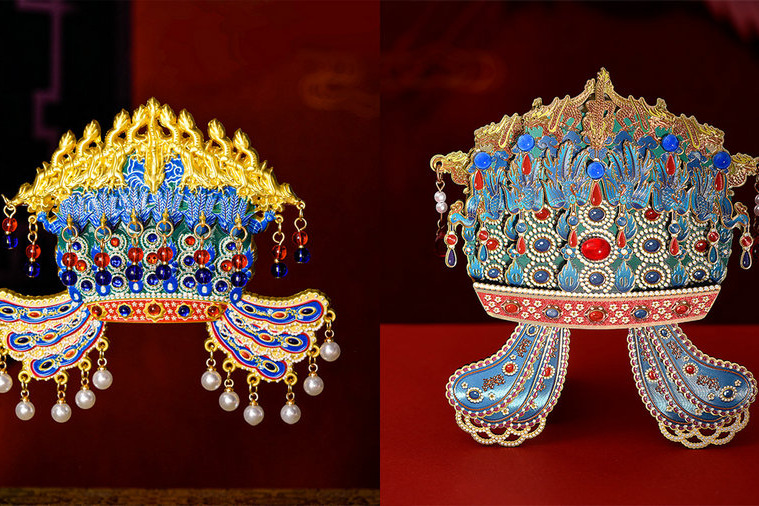Passage to history
Hexi Corridor connected China to the world and provided a route for culture and commerce, Zhao Xu and Ma Jingna report.


Editor's note: China Daily reporters leverage local expertise to devise different itineraries that showcase a blend of historical landmarks and natural wonders in highly recommended cities and sites, offering practical guidance to experience the country.
This is a passageway that has connected China to the world for more than two millennia — a corridor where the wind howls and sand dances year-round, where travelers and their camels once trudged, laden with bundles of silk and sacred scrolls. It was an artery of coveted treasures and the teachings of Buddhism, a crossroads for dreamers, adventurers and believers — souls drawn by an innate yearning for the unknown. Today, it remains a path of wonder, traversed by those who stand in awe of nature's power to sculpt the land and humanity's indomitable desire to shape history.
This passageway is known as the Hexi Corridor — a corridor in name and essence, flanked by the towering Qilian Mountains to the south and the unyielding deserts to the north. Falling entirely within the borders of modern-day Gansu province in northwestern China, it winds through a chain of oases, fragile yet vital, their very existence owing to the mountains whose name, Qilian, means "heaven" and whose soaring peaks produce the life-giving meltwater that sustains this arid land.
"Hexi" means "west of the Yellow River". For ancient travelers from China's heartland, a westward journey through the corridor began with crossing the Yellow River. By contrast, a 7th-century traveler from West Asia or the Mediterranean, having journeyed the full 1,200 kilometers of the corridor, would look out over the river to the expansive plains of central China, and ultimately to Chang'an, the glorious capital of the Tang Dynasty (618-907).
The name of this passageway is therefore self-explanatory: the Hexi Corridor was a window through which China and the world reached out to each other. A vital stretch of the ancient Silk Road, it became a conduit for art, culture and trade — a witness to the will of man and the building of a state.
That human will was repeatedly put to test in this part of the world, where life was a constant struggle due to water scarcity and many other challenges.
In 139 BC, the powerful Emperor Wudi of the Han Dynasty (206 BC-AD 220) dispatched an envoy led by the missionary-adventurer Zhang Qian on a westward journey. Their mission: to seek political allies in the fight against the Xiongnu raiders from the steppes in the north, who dominated the corridor at the time.
Zhang did not return until 126 BC, having spent 13 years on the road, including nearly a decade in Xiongnu captivity.
While his expedition yielded no immediate political alliances, his vivid firsthand account brought the land he had so relentlessly traversed to the attention of Emperor Wudi, who instantly recognized its immense potential.
By then, the Han military campaigns against the Xiongnu were already in full swing, culminating in the decisive victory of a young general, Huo Qubing, in 121 BC.
Leading his unstoppable troops, he marched all the way to Dunhuang at the western end of the corridor. Within the ensuing decades, Dunhuang became a Han military outpost along with Jiuquan, Zhangye and Wuwei, all oasis towns along the corridor.
Today, statues of Huo on a rearing horse can be found throughout the corridor, from city plazas to ranches, where steeds once so prized by Emperor Wudi now roam the grasslands, with the snowcapped Qilian Mountains in the distance.
Meanwhile, Dunhuang attracts millions of tourists each year, thanks to its world-renowned Mogao Grottoes. Carved into the sandstone cliffs at the desert's edge, these splendidly frescoed caves stand as a testament to the spread of Buddhist art along the corridor, as it was subjected to the profound influences of Chinese aesthetics and philosophy.
The Hexi Corridor, true to its nature, was a melting pot of traditions embraced by a multitude of peoples across its vast expanse and beyond. An open, commercial culture thrived, and astute power players, mindful of history, knew that survival depended as much on diplomacy as on military strength. Alliances were sealed through marriage, with princesses journeying alongside travelers across the Gobi Desert.
Today, we reconstruct their lives through tomb epitaphs, along with bronze ware and gold ornaments that accompanied them into the afterlife, now displayed in museums.

One thing that the land was never short of was remarkable life stories. Between 385 and 401, Kumarajiva (344-413), a Buddhist monk from the ancient kingdom of Kucha in present-day Aksu prefecture, Xinjiang Uygur autonomous region, stayed in Wuwei, then known as Liangzhou. From this transformative period emerged a master translator of Buddhist scriptures, whose work achieved a rare balance of beauty and fidelity, shaping Chinese Buddhism for generations to come.
Kumarajiva passed away in Chang'an, where he led 800 monks in an ambitious translation effort. The sarira of his tongue — sarira being the Sanskrit term for the cremated remains of spiritual masters — is believed to be held within the base of a Buddhist temple tower in Wuwei.
For both Zhang and Kumarajiva, the Hexi Corridor was never meant to be the destination, yet fate held them there far longer than they had intended, regardless of their will. In the end, the outcome was the same — the Hexi Corridor left its mark on them, indelibly.
And it undoubtedly marked — and occasionally marred — many souls who dared to measure its length, whether on foot or atop horses and camels, bound not just by the road, but by the journey itself.
The same holds true for today's travelers. One can only begin to grasp the scale of ambition and the sense of heroism this land once inspired in hearts as people drive through its vast expanses of arid terrain, scattered with Camel Thorn, a spiny, grayish-green shrub that grows in alkaline soil and sustains the camels on their long treks.
The remnants of the Great Wall still stand, as do the eroded ruins of ancient passes — once guarded by soldiers who bore the weight of solitude. Their existence had inspired poets for centuries, shaping a soulful strain of romanticism found nowhere else in Chinese verse. During the Han Dynasty, people wrote on bamboo and wooden slips, binding them with cords to create books and documents. Remarkably, more than half of the Han slips unearthed so far have been discovered in the Hexi Corridor.
The region's arid climate — where annual rainfall in many areas is as low as 80 millimeters — made life harsh, yet it also helped to preserve history. This history, woven into the fabric of China, is so vital that one cannot truly understand the country without understanding what unfolded along this corridor over the past two millennia.
Now, close your eyes and let your mind drift to the Hexi Corridor. What do you hear? The howling of wind and pounding of hooves, the battle cries and clinking of cold glistening sword, the solemn chanting of scriptures and the gentle swishing of a thousand paint brushes …
History — deep, layered, and heavy with scents and sounds — rises from the dust. It does not simply wait to be remembered — it beckons, relentless and unyielding. Come.
Tong Yunshan contributed to this story.
Contact the writers at zhaoxu@chinadaily.com.cn



